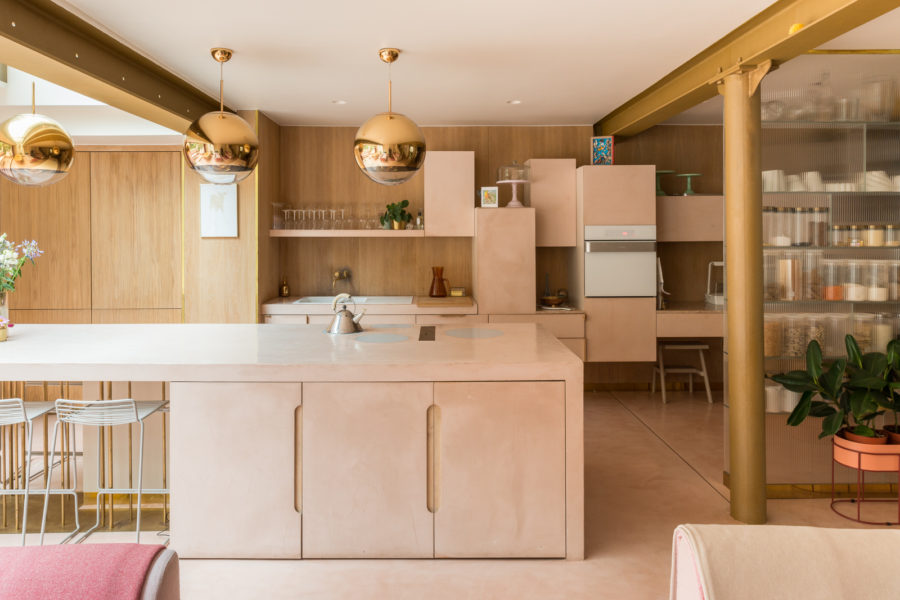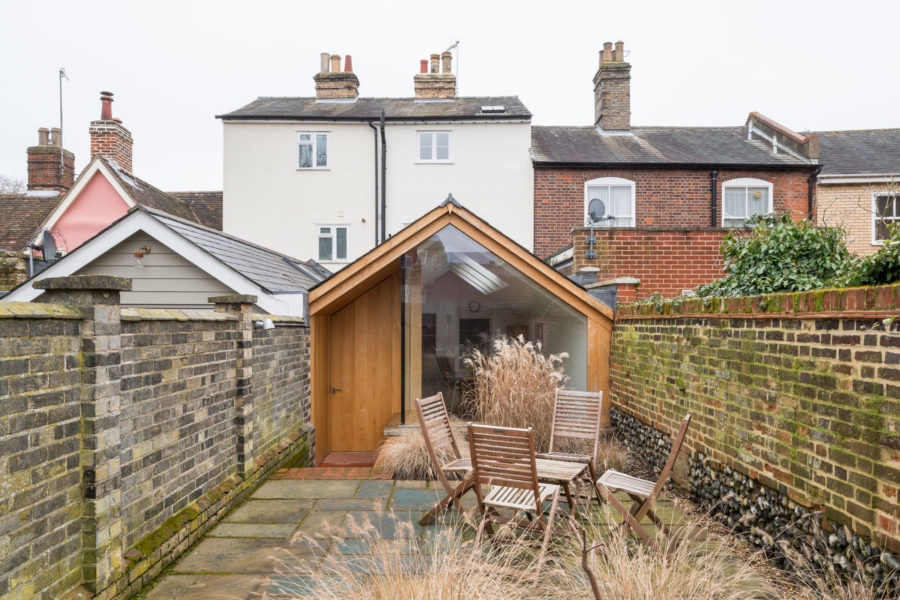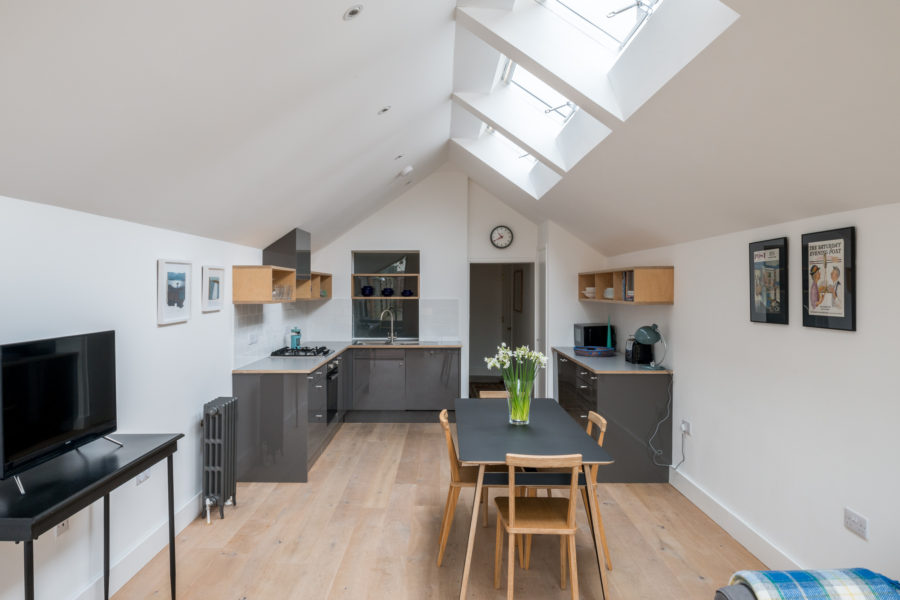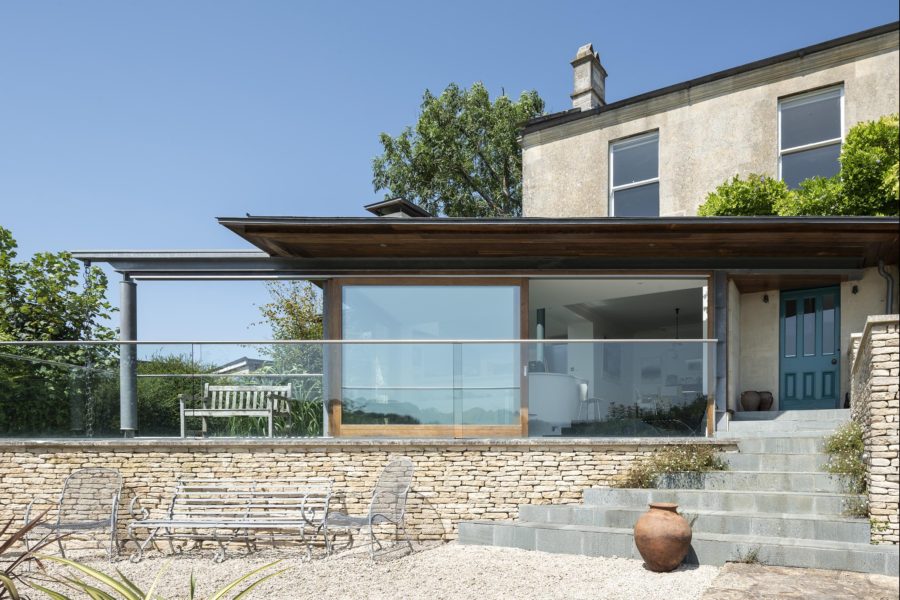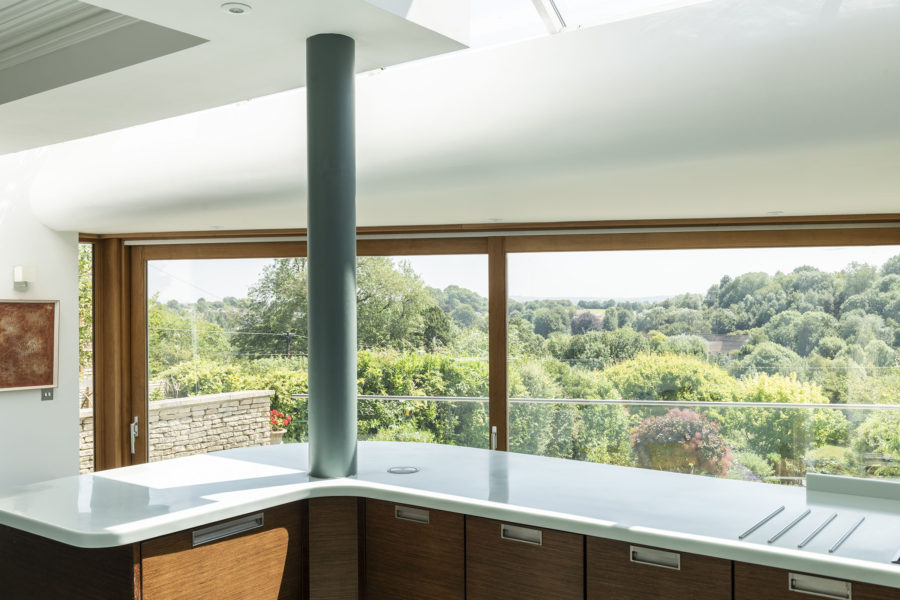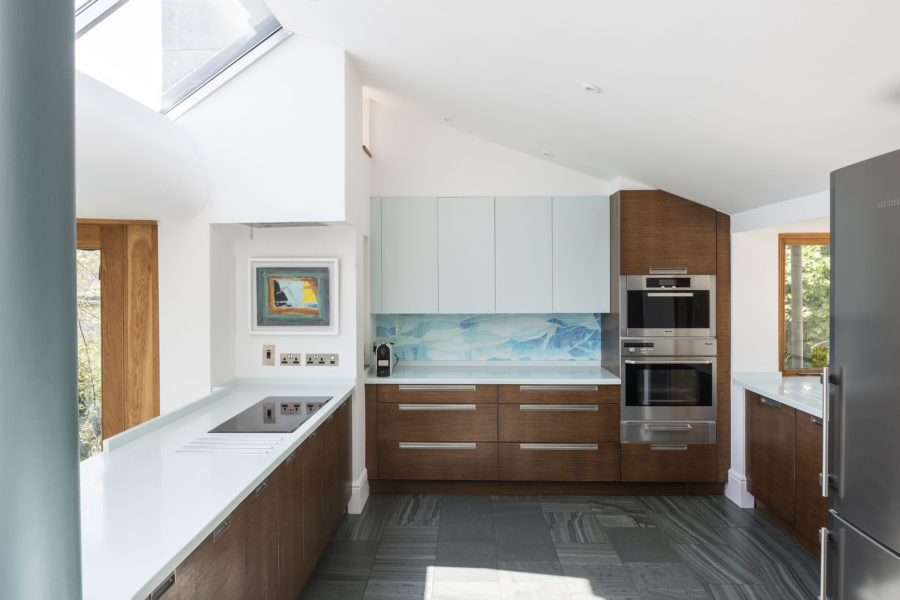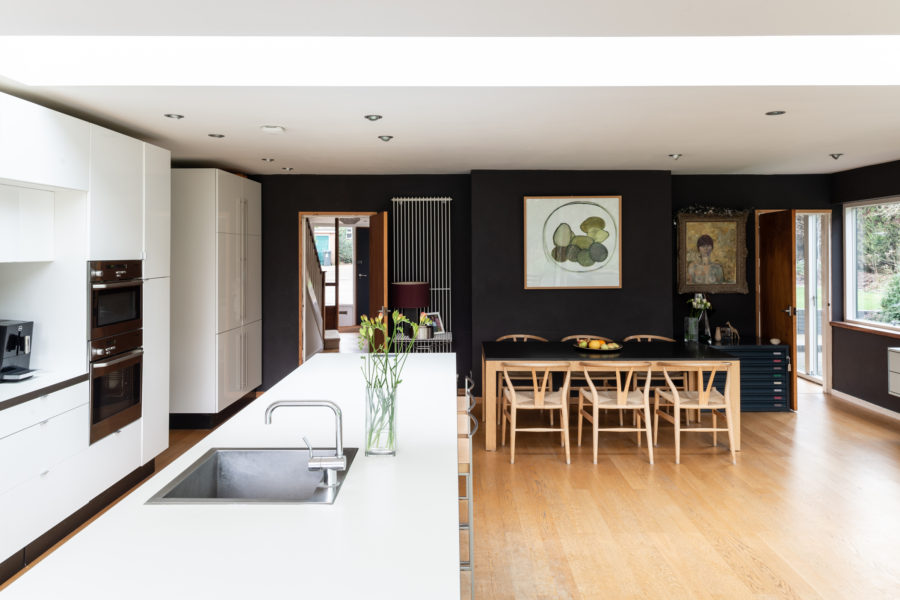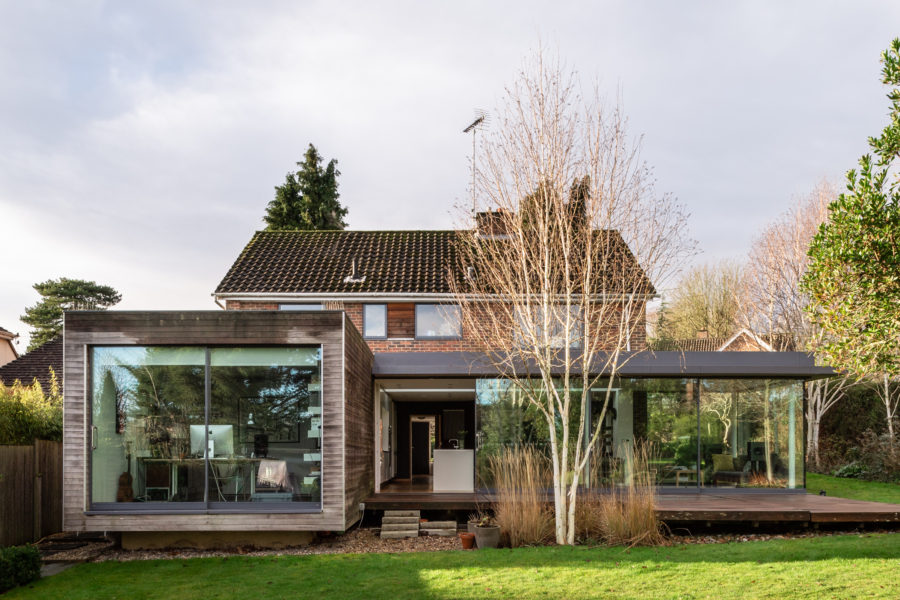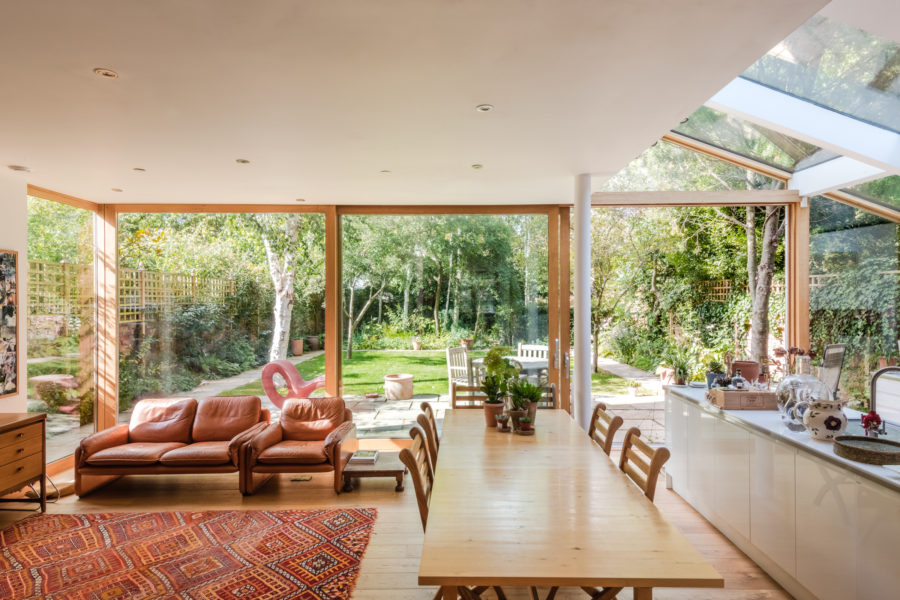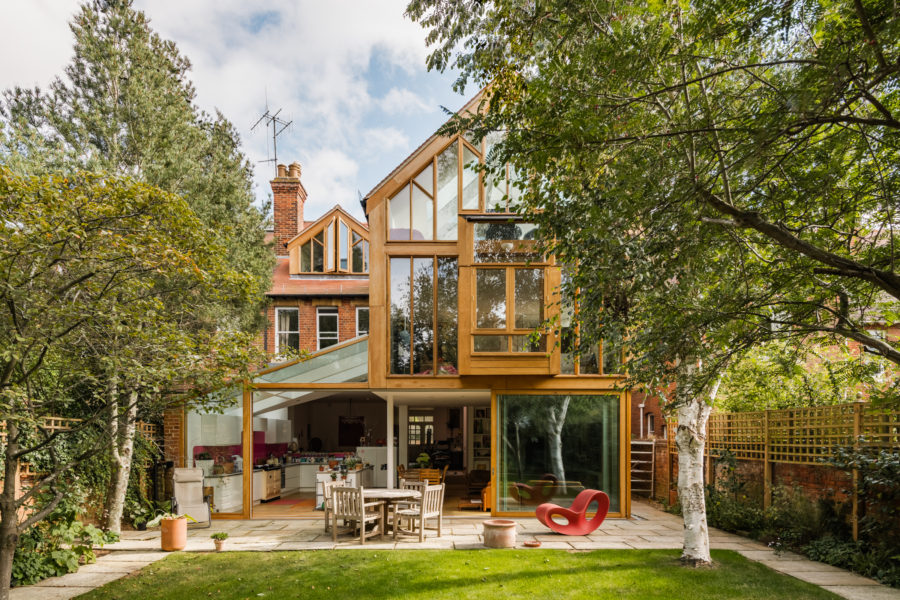Planning Ahead: kitchen extension ideas for family life

Feeling the need to claim some more square metres to accommodate the daily realities of family life? Plan your next home improvement move with these kitchen extension ideas, which take in a glass and steel box on a 1950s house and a striking modern addition to a Grade II-listed Georgian townhouse. For more inspiration, check out our collection of family homes for sale.
Holly Grove, London SE15
How do you improve on the elegant proportions of a Grade II-listed Regency house? For architect David Hingamp the answer was to retain the ceiling height of the original 1822 building but extend out into the garden to incorporate more open, flexible space suited to the requirements of family life in the 21st century.
The interior touches here, from pale-pink poured-concrete floors and worktops, ribbed glass panels, exposed steel beams and brass accent lighting are a case against white-cabinet neutrality when it comes to kitchen extensions: think of the added space as a canvas on which to express your long-held interior wants.
Well Street, Bury Saint Edmunds, Suffolk
As much as it can sometimes pay to be sympathetic to the original building when extending, there’s also an honesty in unashamedly modern additions. Such architectural interventions not only accentuate the appeals of both periods – cosy period charm and light-filled open spaces, say – but enact the age-old effect of compression and release.
Those principles have been masterfully executed at this Grade II-listed Georgian townhouse in the Suffolk town of Bury St Edmunds, where London-based IF__DO architects conceived a gabled roof extension to the rear, bringing increased light and space, and establishing a more direct relationship with the garden.
Belcombe Place, Bradford-on-Avon, Wiltshire
Kitchens of yore were not the heart of the home as they have become today. In untouched period homes kitchens are often sequestered away out of sight and don’t benefit from the light or space we have come expect of our most lived-in spaces. Extending, then, offers a chance to right those wrongs, as has been done at this Victorian house in Bradford-on-Avon in Wiltshire.
The RIBA Award-winning extension opens up the ground floor to incorporate an open-plan kitchen and dining room for more informal living. But perhaps the most enticing aspect of the design is the large sliding glass door to the front that opens up the opportunity to enjoy the south-facing terrace come cocktail hour, or a mid-afternoon break from cooking a summer supper – something the Victorians could have only dreamt off.
Glass House, Bishops Stortford, Hertfordshire
The architects working on the extension to this 1950s house in Bishops Stortford, Hertfordshire, embraced the forward-looking, technology-embracing spirit of the mid-century and took inspiration from Californian Case Study houses to design a steel-framed box, wrapped in panels of glazing.
It might have all come off a bit severe, but the cedar cladding softens the edges of the architecture and beds the house into its quarter-acre garden. The de rigueur open-plan kitchen, flowing into dining, entertaining and living space, is, of course, a given.
Staverton Road, Summertown, Oxford
In the village-like neighbourhood of Summertown in north Oxford is this grand Edwardian house built in 1912 by the great-granddaughter of Charles Darwin, Hilda Padel, who’s responsible for the mature trees in the verdant garden.
In the spirit of evolution, the house has undergone a metamorphosis in recent years with the addition of a three-storey extension, comprising bedrooms and bathrooms above, and a free-flowing kitchen and family room on the ground floor.
The simple use of materials here – largely oak and glass – bring light and airiness via skylights and large-scale sliding doors, while the choice of wood resonates with the period half of the house in a way that steel or concrete wouldn’t manage. The result is a best-of-both worlds achievement: a kitchen and living space designed to modern demands, complemented by the more intimate spaces of the period half.


